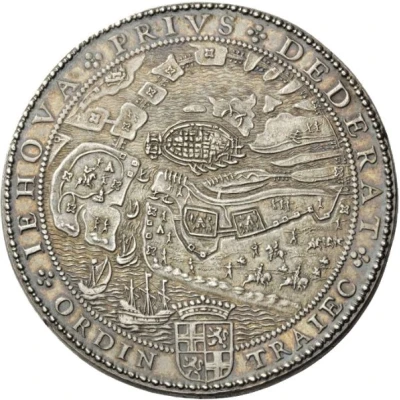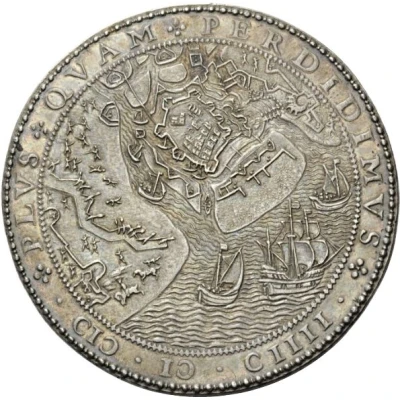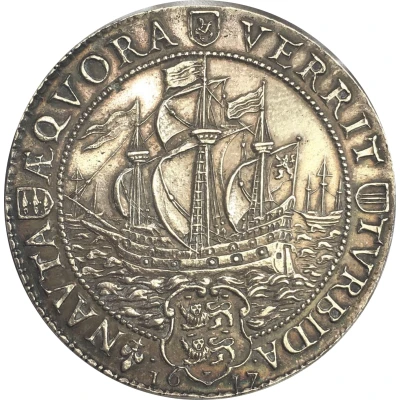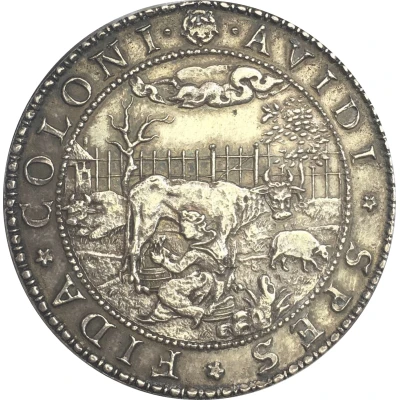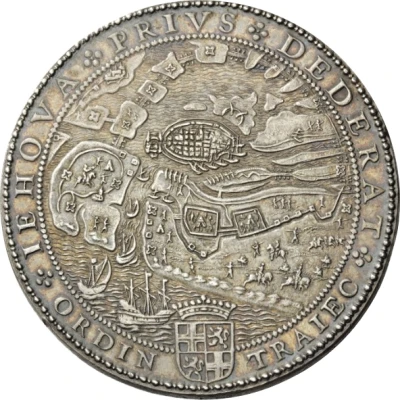
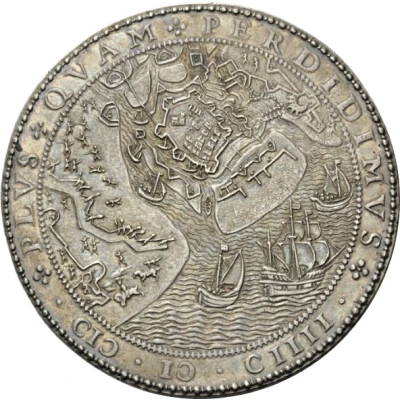

© Nomos AG
Medal - Capture of Sluys
1604 year| Silver | 53.54 g | 54 mm |
| Location | Dutch Republic (Netherlands) |
|---|---|
| Type | Medals › Commemorative medals |
| Year | 1604 |
| Composition | Silver |
| Weight | 53.54 g |
| Diameter | 54 mm |
| Shape | Round |
| Orientation | Medal alignment ↑↑ |
| Demonetized | Yes |
| Updated | 2024-11-14 |
| Numista | N#155988 |
|---|---|
| Rarity index | 100% |
Reverse
View of the area of Ostende with troops and ships.
Script: Latin
Lettering: BPLVSBQVAMBPERDIDIMVSB.CIƒ.Iƒ.CIIII.
Translation: more than we had lost - 1604
Engraver: Gerard van Bylaer
Comment
Van Loon II, pp. 15-17, iii.One of the most famous sieges of the Eighty Years War, and one of the longest in history, was that of Ostende. Held by the Dutch, the Spanish began desperately trying to get it back in 1601. Due to Dutch valor and initial Spanish incompetence, all assaults on the city failed causing enormous casualties. In 1603 the Genoese aristocrat and military commander, Anbrogio Spinola, who had entered Spanish service in 1602, took over the command. On 20 September 1604 a treaty was made that allowed all who wanted to leave the devastated city and rejoin the Dutch forces to the north. The total number of casualties seems to have reached 80,000. Spinola was greatly honored for his fairness - even by his opponent Maurice of Nassau, however, he was financially ruined since he had to pledge his private fortune to finance the war and the Spanish government refused to repay him. As for Sluys, Spinola’s younger brother Frederico had been in command of a Spanish fleet that tried to relieve Sluis from a Dutch siege. This failed, its commander was killed, and the city fell to the Dutch who considered it a perfect trade for Ostende.
